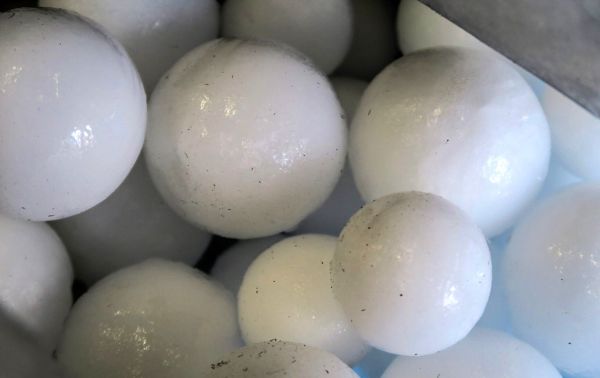Hollywood would have you believe that tornadoes are prevalent in the Midwest. We’re much more likely to see hail in the springtime—balls of slushy ice that pelt our roofs and dimple our cars. [Dr. Ian Giammanco] and his wife and fellow scientist [Tanya Brown-Giammanco] have been studying hail at the Insurance Institute for Business and Home Safety’s research lab since 2012. In 2013, their team created over 9,000 artificial hailstones and fired them at a mock-up of a house in the first indoor full-scale hailstorm.
As fun as it sounds to shoot balls of ice at different things, they did it to better understand the humble hailstone and the damage it can do to insurable goods. Those hailstones from a few years ago were created manually by injecting molds and freezing them. Recently, [the Giammancos] and have taken a more advanced approach to creating artificial hail so they can study the physical characteristics. They scan actual hailstones in order to create models of them. Then they make a 3D-printed mold and use it in a hail-making machine that uses diffused carbon dioxide to mimic the layering that occurs when natural hailstones are formed.
While it would be nice to be able to control hail, the next best thing is mitigating the damage it causes. The better that scientists understand hail, the better materials will become that can withstand its impact. Perhaps someone can perfect a shape-shifting building material and make it resistant to hail.











